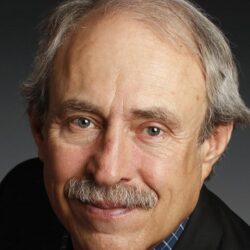by Allen Best
Tri-State Generation and Transmission in early May added generating capacity from a new 104-megawatt wind farm called Crossing Trails, which is located on wheat fields and pasture lands 150 miles southeast of Denver, between the towns of Seibert and Kit Carson.
What remains unanswered is how Tri-State will connect the thousands of megawatts of new generating capacity it will need from wind and solar resources during the coming decade to its customers in Colorado and three surrounding states even as its shuts down existing coal plants at Craig. A possible deal with Xcel Energy isn’t going forward.
Xcel in January announced a $1.7 billion loop of high-voltage transmission lines in eastern Colorado. The high-voltage transmission lines Xcel calls Colorado’s Power Pathway would loop eastward from Denver in a semi-loop ending at Pueblo. An extension south to the Walsh-Springfield area of southeastern Colorado is also a possibility.
In that early March announcement, Xcel said it was negotiating with other utilities in Colorado, Tri-State included, about participation.
Those negotiations with Tri-State have produced no agreement.
“Tri-State worked closely with Xcel Energy to try to reconcile how Xcel’s project, which is primarily designed to bring renewable resources from eastern Colorado to the Front Range, could alsoPreview (opens in a new tab) effectively serve the reliability, clean energy and interstate system needs of rural electric cooperatives and the communities served,” said Mark Stutz, a spokesman for Tri-State, in an e-mail.
“These differing needs could not be reconciled in a single transmission proposal with Xcel Energy, and Tri-State will not be participating in Xcel’s project,” he said.
Tri-State is now working with other utilities and stakeholders to consider other options, Stutz said. Last year, Tri-State announced it would join an energy imbalance market with the Western Area Power Authority and other participants. This market is considered a first-step into a fully organized market with benefits that can produce lower electricity prices and better match renewables with demands.
Duane Highley, the chief executive, has also been a strong proponent of Tri-State joining a regional transmission organization, or RTO. He favors one operated by the Southwest Power Pool, which currently operates on the Great Plains—but not in Colorado. Xcel has indicated it favors CAISO, the California-operated RTO, but has questioned whether an RTO is needed at all.
Xcel Energy had no comment about the status of its negotiations with Tri-State. Michelle Aguayo, the company spokeswoman in Denver, said no other partners have signed onto the project. However, potential partners “remain supportive of the project as expressed in their written thoughts” to the Colorado Public Utility Commission. This, she explained, was in response to Xcel’s Clean Power Pathway plan submitted to the PUC in March.
This is from the May 12, 2021, issue of Big Pivots, an e-journal. To sign up, go to BigPivots.com
Based in suburban Denver, Tri-State serves 42 member cooperatives across Colorado and three other adjoining states. Of them, 16 are in Colorado. The Colorado coops represent a large majority of Tri-State electrical demand.
Tri-State has been rapidly shifting its generating capacity in the last two years, the result of impossible-to-ignore low costs of renewables and impatient state policy mandates in Colorado and New Mexico.
In January 2019, Highley announced 1,000 megawatts of new wind and solar and the closing of Craig Generating Station by 2029.
Crossing Trails, the new wind farm, is part of that push into renewables. It consists of 25 wind turbines, all produced by Vestas, primarily at the company’s manufacturing plants at Windsor, Brighton, and Pueblo. A release from Tri-State said the blades stretch more than 240 feet, making them among the largest and most advanced turbines installed in Colorado so far.
The 20 larger wind turbines have a generating capacity of 4.3 megawatts. As for the 5 smaller turbines, they can generate 3.6 megawatts each.
When all are operating at full capacity, the wind farm in eastern Colorado can power the equivalent of 50,000 homes, assuming the turbines are generating 45% of the time.
The wind farm is owned by EDP Renewables, an international firm with North American headquarters in Houston. Tri-State is purchasing the wind power from the company, which can benefit from federal tax credits available to private companies. Tri-State, as a creation of its member cooperatives, cannot benefit from those tax breaks.
The wind farm will also benefit rural economies of eastern Colorado. More than $20 million will be paid to landowners during the project’s life while still allowing substantial agriculture production from the lands.
Property taxes of $12 million will be paid during the project’s lifecycle to the local governments in Kit Carson (Burlington) and Cheyenne (Cheyenne Wells) counties.
The project has also yielded 6 to 10 permanent jobs.
Why support Big Pivots?
You need and value solid climate change reporting, and also the energy & water transitions in Colorado. Because you know that strong research underlies solid journalism, and research times take.
Plus, you want to help small media, and Big Pivots is a 501(c)3 non-profit.
Big grants would be great, but they’re rare for small media. To survive, Big Pivots needs your support. Think about how big pivots occur. They start at the grassroots. That’s why you should support Big Pivots. Because Big Pivots has influence in Colorado, and Colorado matters in the national conversation.
- A big charge for Colorado’sEVnetwork - April 13, 2024
- United Power to get solar from near Pawnee - April 10, 2024
- Today’s shift to EVs and a long-ago motorcycle ride - April 10, 2024





